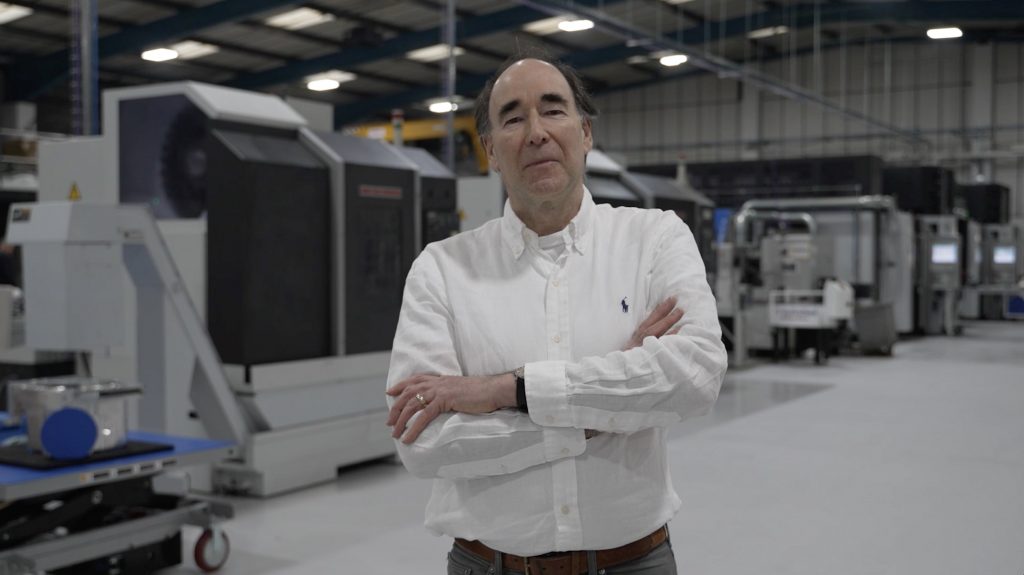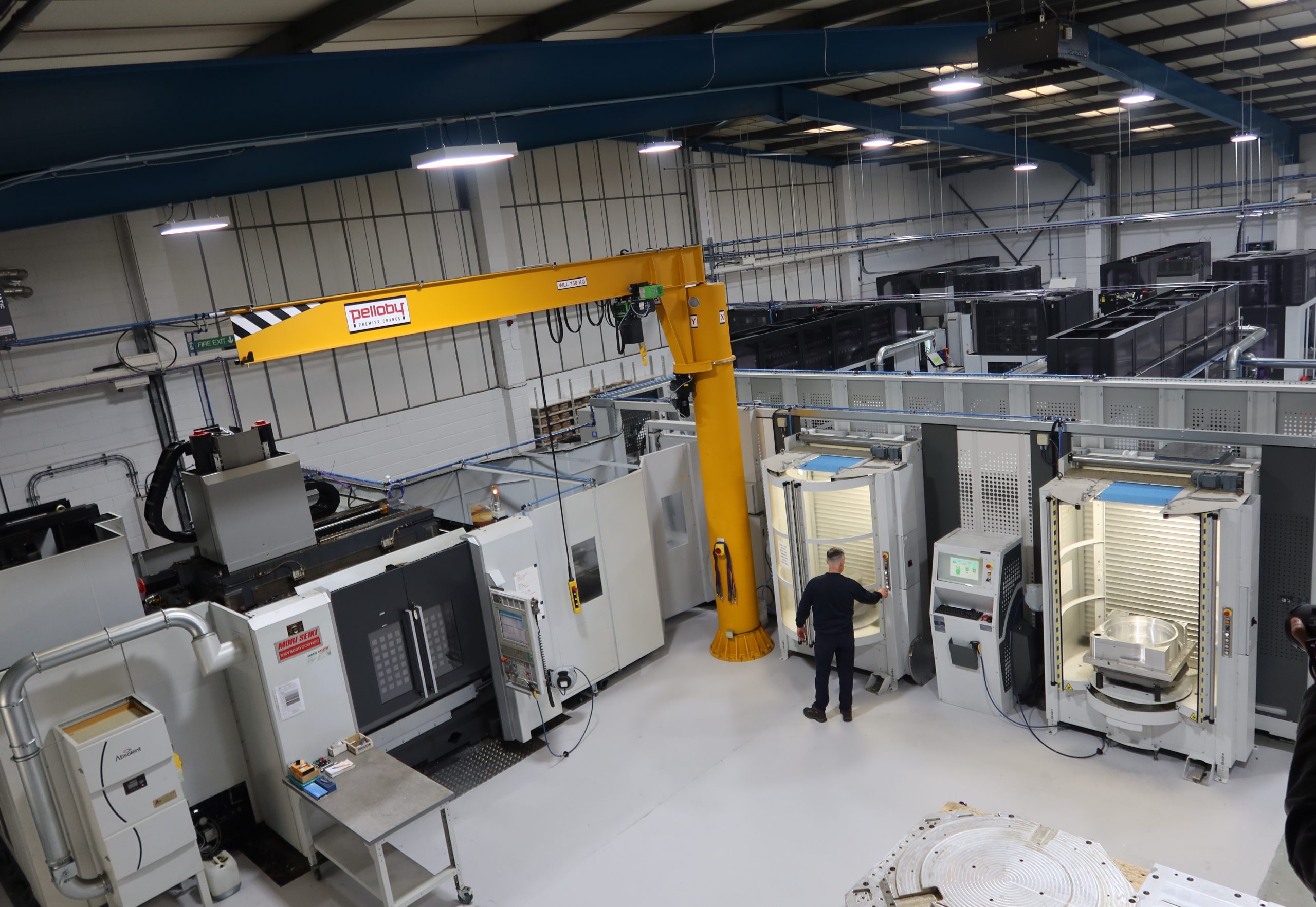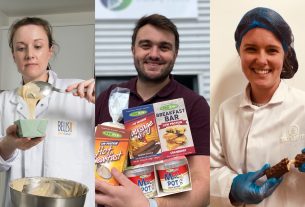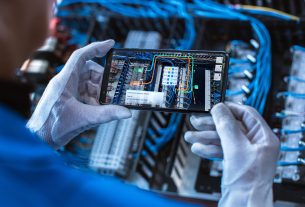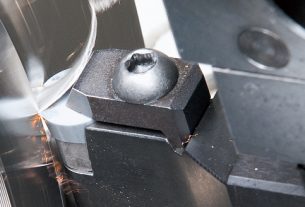The pandemic has undoubtedly changed the way we work, but for OPEN MIND Technologies, undergoing an extensive online tendering and prove-out process against its competitors was an exciting new challenge. RE Thompson has ambitious plans for its manufacturing facility and implementing the correct CAM system was seen as a critical decision requiring due diligence for the subcontract manufacturer.
Founded in 1948, RE Thompson has manufactured aerospace components for more than 60 years, diversifying into the electronics and semiconductor, medical, hydrogen, and electric vehicle (EV) sectors in its more recent history. To undertake this diversification, the company has invested over £7m in the last 10 years; an investment that includes opening a second 20,000sq/ft manufacturing facility in 2015, installing advanced fibre connectivity and decarbonising infrastructure, DMG MORI 5-axis machining centres and most recently an Okuma Multus from NCMT and a CMM from Hexagon.
The next step for the Hampshire company is to increase its throughput and workflows through automation. Unlike most subcontract manufacturers, RE Thompson already has impressive factory floor automation with a remarkable 512 pallets on just nine machining centres. The bottleneck for RE Thompson has been the process flow away from the factory floor – primarily CAM programming. For RE Thompson, its existing CAD/CAM system was ‘old hat’, and the technology was not available for modern machining strategies such as the lens and barrel tools that it requires for machining blisks and impellers for the aerospace industry. Commenting upon the existing system, Company Owner Michael Thompson says: “The system was falling down on meeting our requirements and some of its strategies are at least 10 years old, and every time a new version is launched, there’s nothing significantly new with it. We first put the old system in our factory around 30 years ago and over the years it has failed to keep up with technology to the point that the developers don’t even create their post processors. If you had all day, I could give a complete list of reasons why we needed to move away.”
“The system put a lot of limitations on our business with regards to our MPI (Marginal Propensity to Invest). From now to October, certain things will be transforming within our business, and this includes MPI, lead times and turnaround times. We have a lot of knowledge and skill in the company, but we had an old CAD/CAM system that has been holding us back. What we are doing now is building a new system from the ground up, we have installed a new fibre network infrastructure and installed ultra-efficient air compressors with full redundancy. Allowing better use of what we have.”
With regard to selecting OPEN MIND, Michael reveals: “We looked at five or six systems, but we wanted the flexibility to create really good tool paths. It was a very short review of these systems, as we quickly narrowed it down to two packages. hyperMILL is very well supported in the UK, lots of prestigious companies and subcontractors use it and there is local support. However, local support is now increasingly irrelevant, as the pandemic and our complete feasibility study through to adoption have shown. We have been implementing the system with OPEN MIND over Teams and have yet to meet them in person. We sometimes have people in 6 to 8 locations working from home, so being able to implement hyperMILL with everyone involved has been fantastic.”
“When we narrowed our process down to two vendors, we found that hyperMILL had advanced tool path strategies and the overall support was outstanding. We spoke with Ken Baldwin and Jon Shortt in the UK but also the OPEN MIND Team in Germany who detailed innovations in the pipeline that would help us with our ambitious plans that we are working towards for October.”
Before alluding to the next tranche of features in the pipeline with hyperMILL, Michael emphasised the existing features that helped the company make its decision: “The flexibility of hyperMILL is second to none and they have really honed-in on 3 and 5-axis strategies as well as turning – with its reputation in high-end 5-axis machining, we were very surprised by how good the turning package is.”
Looking at particular components manufactured by RE Thompson, Michael says: “hyperMILL will help us with very small parts where we want to make multiples through to very large semi-conductor chambers. There was one part in the MPI stage that would save us a staggering four days by using hyperMILL. This saving will be achieved through automating datum settings. These jobs can take weeks to programme, but just in one area, hyperMILL will make a huge 4-day saving – that is just phenomenal.”
“When you have a lot of datums and ports on a job, we have to set those all individually and on our previous system, you really had to markdown in detail what had been set up. With hyperMILL, it just does it for you. This saving is just in setting the jobs, it doesn’t even account for the possible savings in overall programming and the machining cycles. When it comes to machining cycles and retracts, hyperMILL will naturally follow the shortest tool path – at present, our system retracts the tool all the way out for each process. This can be analysed and used to continuously improve our Manufacturing Performance Index (MPI) data. Providing increased capability when assessing our productivity vs profitability for our manufacturing processes.”
On the factory floor, the company produces everything from 1-off and small batches to runs of hundreds of parts. Turning naturally has higher production volumes, but some milling jobs can be up to 500-off a year of very complex parts for some clients. Parts are processed with utmost efficiency due to the company’s investment in 512 pallets that are either integrated via machine tool suppliers like DMG MORI or through automation specialists Fastems. With no difference between complex and less complex parts. This has enabled the business to run lights out 24/7 since 2008. New business is from the semi-conductor, maritime autonomous vehicle, aerospace enclosure, hydrogen, and EV industries – all requiring ever-faster turnaround times. Some of these companies will only want 20-50 parts each month, with others requiring significantly greater numbers.
Off-machine savings
Looking at this evolving mix of work, Michael continues: “Other than retracts, our toolpaths are pretty good, and we minimise air-cutting and maximise machine utilisation where possible. Where hyperMILL will make a difference is during the time from order receipt to first-off production. We expect lead times to be hugely reduced. It means our productivity will at least double as we can do the MPI and produce a lot more in a shorter time. It has been a bottleneck in our business for some years now, and we can’t afford to just keep putting more engineers into the business. At present, we have four manufacturing engineers programming, but we have another three setters that will be trained to programme, and we have another three positions advertised at the moment. To facilitate this, we will be investing in 10 seats of hyperMILL, but I expect this to double and eventually increase fourfold, as we expect our throughput to more than double with hyperMILL.”
As Head of Sales, Matthew Shaw adds: “The addition of hyperMILL will be great for the sales team, as we will have more capacity to sell. We can also adopt a much better approach to the market. hyperMILL will give us greater speed to market, a faster-quoting process and with improved throughput, our lead-times will improve significantly. Furthermore, with improved processes and machining strategies available to us through hyperMILL, we can emphasise the value this brings to our business and most importantly, our customers.”
With regards to being more competitive with this diverse workload, Michael says: “Sometimes we weren’t competitive machining propeller blades or impellers, as we couldn’t use barrel tools. So, our sales team had trouble selling that facility. With hyperMILL, we will be able to utilise all of those tools and strategies. Our team has seen some of the features in hyperMILL and they immediately recognise the benefits. This is creating considerable excitement among the team.”
“The tool library is also very impressive. Having the facility to build a tool library with comprehensive data on speeds, feeds, materials, and machining parameters excites our team, and OPEN MIND has even more features in the pipeline. This will be a huge benefit coming from the limited tool library facility in our existing CAM system. Another important factor in selecting our supplier was that we wanted to use a company that makes its living from CAM. If you look at some systems in the market, they don’t rely on CAM as their sole product, and this is where they fail to evolve. As an analogy, I look at restaurants. A restaurant that solely survives on selling food will live or die by the quality and service it provides whereas a restaurant in a hotel, sporting venue or other complex is only complementary to the venue – serving quality food isn’t the core reason for the business. This analogy is similar to ‘CAM companies’ and ‘companies that also do CAM’ – we wanted the best possible product and service from a ‘CAM company’.”
Concluding on the role-out of hyperMILL at RE Thompson, Michael concludes: “One of the key considerations to implementing a new CAM system was the ability to integrate it into our automation plans. We are looking in-depth at the automation of our processes and systems away from the factory floor and this will include the CAM software. We are looking to adopt new systems and methodologies by the summer, with hyperMILL’s Virtual Machine and Automation systems playing an integral role. By the 1st of October, we want to be offering a very short lead time to our clients and there will be more announced in due course on this.”
